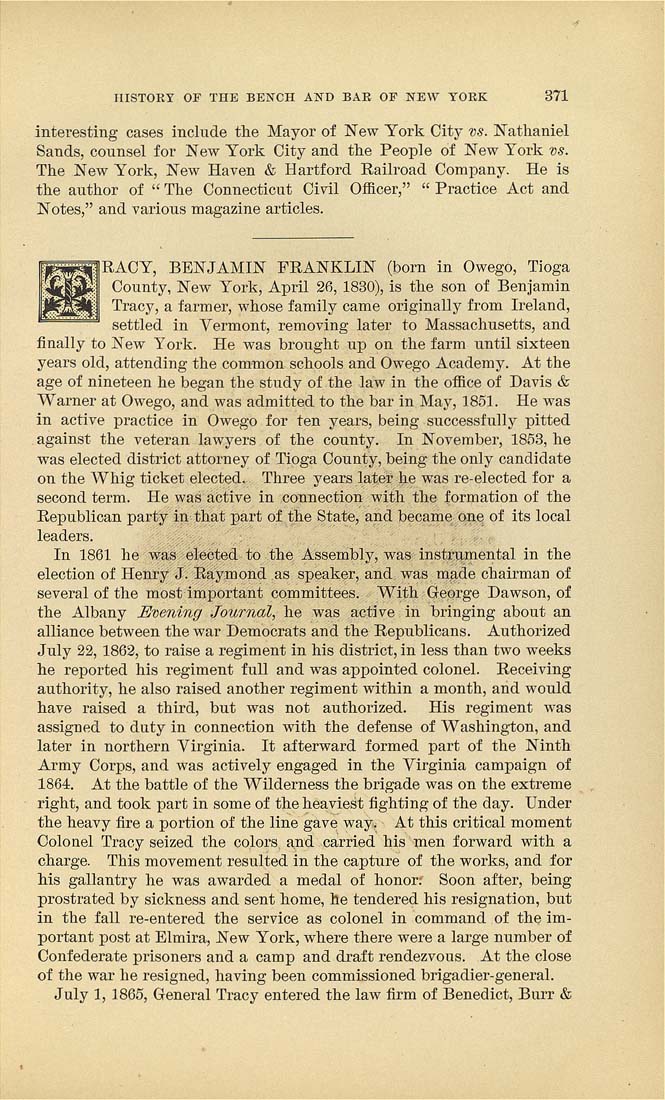HISTOKY OF THE BEHCH AHD BAE OF NEW TOEK 371
interesting cases include the Mayor of New York City vs. Nathaniel
Sands, counsel for New York City and the People of New York vs.
The New York, New Haven & Hartford Railroad Company. He is
the author of " The Connecticut Civil OiHcer," " Practice Act and
Notes," and various magazine articles.
■RACY, BENJAMIN FRANKLIN (bom in Owego, Tioga
County, New York, April 26, 1830), is the son of Benjamin
Tracy, a farmer, whose family came originally from Ireland,
settled in Vermont, removing later to Massachusetts, and
finally to New York. He was brought up on the farm until sixteen
years old, attending the common schools and Owego Academy. At the
age of nineteen he began the study of the law in the office of Davis &
Warner at Owego, and was admitted to the bar in May, 1851. He was
in active practice in Owego for ten years, being successfully pitted
against the veteran lawyers of the county. In November, 1853, he
was elected district attorney of Tioga County, being the only candidate
on the Whig ticket elected. Three years later he was re-elected for a
second term. He was active in connection with the formation of the
Republican party in that part of the State, and became one of its local
leaders.
In 1861 he was elected to the Assembly, was instrumental in the
election of Henry J. Raymond as speaker, and was made chairman of
several of the most important committees. With George Dawson, of
the Albany Hvening Journal, he was active in bringing about an
alliance between the war Democrats and the Republicans. Authorized
July 22, 1862, to raise a regiment in his district, in less than two weeks
he reported his regiment full and was appointed colonel. Receiving
authority, he also raised another regiment within a month, and would
have raised a third, but was not authorized. His regiment w^as
assigned to duty in connection with the defense of Washington, and
later in northern Virginia. It afterward formed part of the Ninth
Army Corps, and was actively engaged in the Virginia campaign of
1864. At the battle of the Wilderness the brigade was on the extreme
right, and took part in some of the heaviest fighting of the day. Under
the heavy fire a portion of the line gave way. At this critical moment
Colonel Tracy seized the colors and carried his men forward with a
charge. This movement resulted in the capture of the works, and for
his gallantry he was awarded a medal of honor; Soon after, being
prostrated by sickness and sent home, he tendered his resignation, but
in the fall re-entered the service as colonel in command of the im¬
portant post at Elmira, New York, where there were a large number of
Confederate prisoners and a camp and draft rendezvous. At the close
of the war he resigned, having been commissioned brigadier-general.
July 1, 1865, General Tracy entered the law firm of Benedict, Burr &
|








